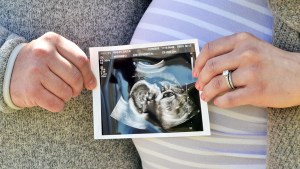Pope Francis was in attendance for the recent “General States of Natality,” an Italian conference that seeks to address the ongoing crisis of low birth rates, often described as a “demographic winter.” The Pope noted a variety of social and economic factors that have contributed to the declining Italian birth rates, stating, “The family is not part of the problem, but is part of its solution.”
At a 2021 Angelus address, the Pontiff lamented that, in Italy, “It seems that many couples prefer not to have children or to have only one child.”
A report from CNN, however, is suggesting that the desire to have many children exists in Italian parents, but there are several hurdles that make it difficult.
Aleteia has previously reported on the dwindling birth rates of Italy:
According to The World Factbook, with only 1.24 births per woman, Italy has the worst fertility rate in Europe and the 6th worst globally. The 2023 birth rate in the country was 7 births per 1,000 people, and Italian women tend to have children on average at around 31 years old. There were 392,598 births in 2022, 7,651 fewer than in 2021 (-1.9%).
The Italian birth rate has been consistently falling since the 2008 economic crisis and the continuing trend is largely being blamed on the economic instability that persists in a large portion of the population. CNN took a look at the economy in relation to the falling birth rates to explain the fall of Italian fertility.
Examining monthly income of prospective parents, CNN found that the average monthly earnings in Italy stands at €2,475 a month, according to figures from ISTAT. With the average cost of a 100-square-meter (1,000-square-foot) apartment being €1,212, the report quickly identified the housing market as a prime factor of financial struggles. Prospective parents who are spending half their monthly pay just to keep a roof over their heads may take pause when considering adding another member to the family.
Monthly savings were also found to have fallen drastically since the 2020 pandemic. Whereas Italy was once considered a nation of “savers,” with the average family putting aside 20% of their monthly income, now this figure has fallen to just over 5% as of 2023. The report notes that the Italian government offers incentives for parents to have more children, including a monthly grant of €175 per child, but CNN pointed towards similar tactics that have not borne fruit in Germany or France.
CNN spoke with a young married couple – Claudia Giagheddu Saitta, 27, and Gabriele De Luca, 31 – who have been hesitant to start their family in the current economic climate. Claudia said that monthly grants and tax cuts on baby products are not enough to put them at ease:
“The government thinks €10,000 ($10,800) is enough to have a child. But the incentives are temporary. A child lasts forever,” Giagheddu Saitta says. She says the idea of having more than one child, if she has one at all, feels impossible.
De Luca went on to blame the government for not doing enough to support an incoming younger generation. He said that the government was voted in by those in their 50s to 70s, who place their own interests before those of the next generation. Furthermore, he suggested that Italy may need to take some risks in displeasing this voter base if it wishes to spur a baby boom.
While the largest voter base in Italy continues to be those at or approaching retirement age, the lackluster fertility rates should be of concern to them as well. Italy’s pension system is described as “pay-as-you-go,” in which the current workforce pays into the pension program to support those who have retired. This fund, however, is placed in jeopardy by low levels of new workers entering the workforce. It is thought that by 2030, 2 million workers will have entered retirement with no new members of the workforce to pay their pensions.



